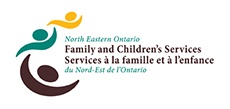The Province of Ontario has amended the Child, Youth and Family Services Act 2017 (CYFSA) in relation to child/youth sex trafficking and the Ministry has introduced a new directive. These changes come into effect on October 1, 2021.
While the legislative amendments and policy directive will impact certain aspects of our practice, they are well aligned with the mission, vision and values of our organization. Our focus on a collaborative approach, with the well-being and safety of the child and family at the centre, remains unchanged.
The information below is provided as a brief overview of the changes.
The amendments and new directive will:
- Establish grounds for protection that explicitly include child/youth sex trafficking in a manner that is not tied to “the person having charge of the child;”
- Provide authority for child protection workers and peace officers to temporarily remove 16-and-17-year-old victims of sexual exploitation resulting from child/youth sex trafficking to another location, in order to provide them with an opportunity to access supportive services; and,
- Strengthen offence provisions and corresponding penalties to be utilized in situations where an individual interferes with, or harbours, a child in society care, including for the purposes of child sex trafficking.
Why were these changes introduced?
Although child/youth sex trafficking was generally understood to be a form of sexual exploitation, the lack of definition and specificity led to inconsistent response and practice. The new legislation defines sex trafficking and explicitly states that it is grounds for protection.
Previously, the grounds of a child in need of protection were tied to the conduct of the person who had charge of the child. This did not address situations where the caregiver was acting appropriately to protect the child (attempts to extricate and/or search) but was unsuccessful in keeping the child/youth safe. The new legislation allows Children’s Aid Societies (CAS) to intervene in cases where the caregiver is acting protectively, but the child is still at risk of harm.
